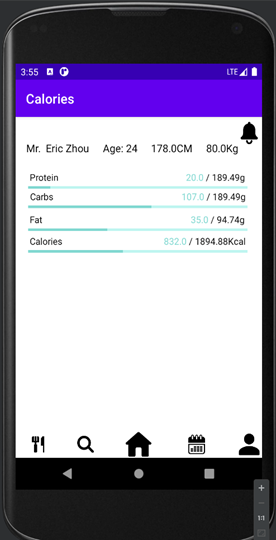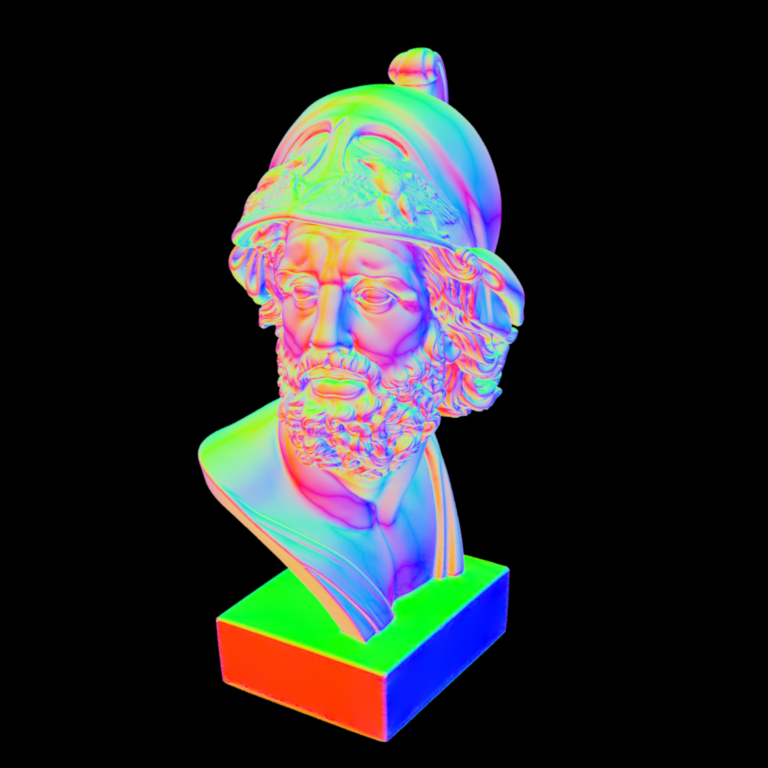Calorie
Language: Java Platform: Android Phone
Calorie is the first Android App that I've ever made. This app is intended to give users a easy way to track their daily nutrition intake and provide meal recommendations accordingly. In order to use this app, users just need to input their body parameters to build their personal models and add foods to the system. After that, our app will monitor the status of protein, carbs, fat, and calorie and alert users while any one of them passes the corresponding limit. Meanwhile, our app will pop up a weight log screen once a day to let users update their weights. All weights will be stored online and presented with a plot of the weight trend on the Calender page.
We used Edamam and Spoonacular as our food databases and use Okhttp to interact with these two APIs so that users search and add whatever they would like to eat. Our app use Bmob as our online date storage and most of data will be stored in Bmob. For some light-weight data (like users' body parameters), we use Shared Preference and store them locally.

Sorting Visualizer
Language: C++ Library: OpenGL Platform: PC
This project is intended to demonstrate how sorting algorithms work and make abstract algorithms easy to understand. There are many similar projects online and they all look pretty cool. Hence, I made a version of mine. I reviewed some classic sorting algorithms during the implementation. Even though OpenGL is just a role player in this project, I still learned some fundemental techniques of OpenGL like creating and destroying a window.
Accelerated Ray Tracing
Language: C++ Platform: PC
Code base: Nori
This project uses Surface Area Heuristic to determine whether splitting a bounding box or not and using KD-tree to store every bounding box. This is the final project of my CS 112 (Computer Graphics). Me and my teammates spent approximately two weeks to finish this project.
Our project has two test:
- Bunny (A small obj, which can be done under 150ms)
- Ajax (A large obj, which can be done under 7s)


Monster Sudoku
Language: Python Platform: PC
Monster Sudoku (or Mega Sudoku) is a puzzle that follows the rules of Sudoku and is played on a NxN grid, N being any positive integer including N > 9. The numbers that fill each square are selected from the first N positive integers. For display purposes, they are shown as 1, 2, ..., 9, A, B, ..., Z so that each token takes up exactly one column when printed.
Four Parameters:
- N = the length of one side of the NxN grid, also the number of distinct tokens
- P = the number of rows in each block, also the number of block columns.
- Q = the number of columns in each block, also the number of block rows.
- M = the number of values filled in from the start.
Difficulty
- Easy: P = Q = 3, N = 9 with 7 given values
- Intermediate: P = 3, Q = 4, N = 12 with 11 given values
- Hard: P = Q = 4, N = 16 with 20 given values
- Expert: P = Q = 5, N = 25 with 30 given values
This project is done by me and my friend. We implemented Minimum Remaining Value with Degree heuristic as a tie-breaker (MAD), Least Constraining Value (LCV) that has a specific tie-breaking mechanism and two consistency checks, Forward Checking and Norvig's Check.